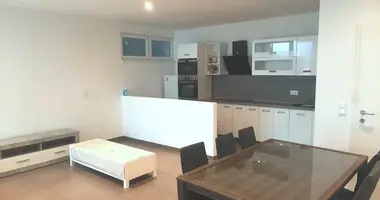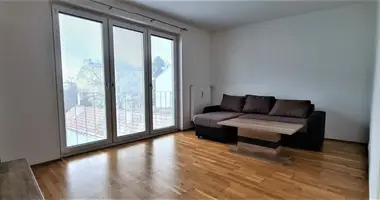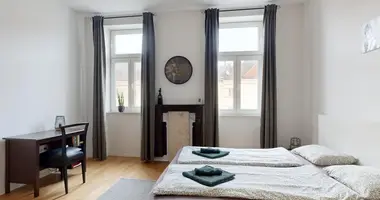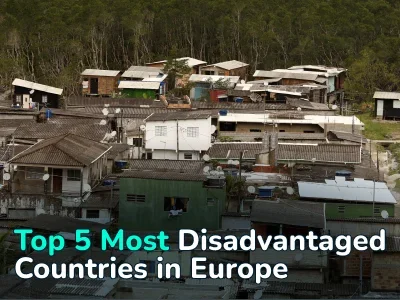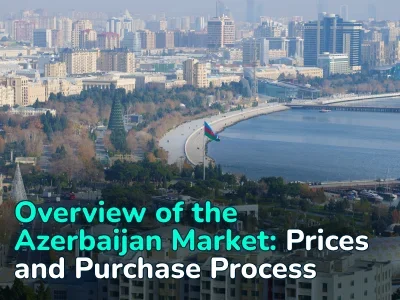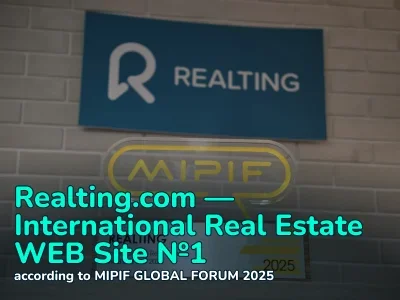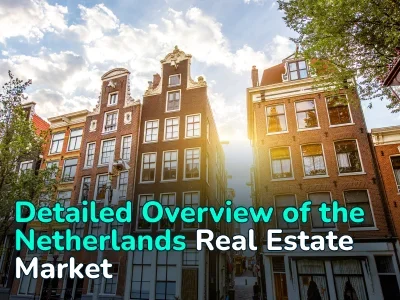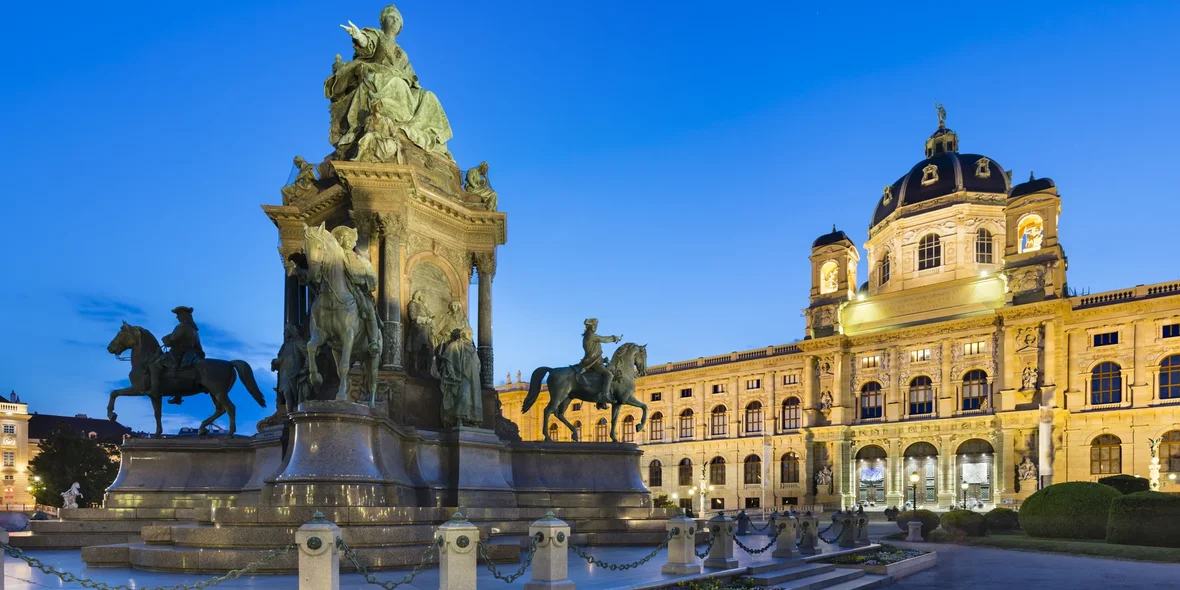
How to Get a Mortgage in Austria: Conditions, Process, and Requirements
Mortgage lending is a key tool for buying a home in Austria. Without it, the availability of real estate leaves much to be desired, with prices per square meter ranging from €5700 to €7000.
This is not very relevant for the Austrians themselves, because only 54.3% of the country’s citizens own real estate — the rest prefer to rent. On the contrary, this situation gives foreign investors the opportunity to purchase a property with a low interest rate and earn money by renting it out.
In our article, we will talk about the terms of mortgage lending in Austria, including requirements for borrowers, features of registration for non-residents, additional costs, and forecasts for the near future.
Pros and Cons of Buying a Home in Austria
The main advantage is the low interest rate — currently it is only 2-2.25%. That is, when buying real estate with a mortgage for 35 years, you will overpay only 70-80% of the original cost. For comparison: in the USA, with a current rate of 6-7%, the overpayment is 180-210% over 30 years. Real estate can be rented out and is expected to experience an annual rate increase of 10-25%. Over the past two years, the average price of housing in Austria has increased by 16-25%, especially in large cities.
Disadvantages:
- A high down payment of 20% of the cost of housing (and in some cases up to 50%).
- The registration process is delayed due to the sluggishness of local bureaucracy.
- One-time payments (1.5–2% for registration) and annual insurance costs (about 0.1% of the cost of the property) are added to the loan amount.
Mortgage Lending Conditions in Austria
As mentioned, average mortgage rates in Austria are 2–2.25% for fixed rates with a term of 5–10 years. Variable rates linked to EURIBOR start at 1.8% and are subject to fluctuations depending on the monetary policy of the ECB, and during the peak inflation years of 2022–2023, they did not exceed 2.5%.
The standard mortgage term in Austria is 20–25 years, but banks provide the option of extending it to 35 years. The main thing is that the borrower maintains a stable income and is not older than 65 years at the end of the repayments.
The minimum down payment is 20% of the property value, which is equivalent to €50,000—100,000 for an average apartment in Vienna worth €250,000—500,000. For non-residents or properties in premium regions such as Salzburg, the bank may require up to 50% of the property price as a down payment. However, with additional collateral or a surety, this figure can be reduced by 5-10%.
Types of mortgages in Austria:
- Hypothekarkredit is a mortgage loan with decreasing payments, in which the interest on the loan is repaid first and the principal is repaid later. Initially, about 70-80% of the monthly payment is used to pay interest, which gradually reduces the total payment as the remaining debt decreases. The purchased property serves as collateral, ensuring the fulfillment of the borrower’s obligations to the bank.
- Annuitätendarlehen is a loan with fixed monthly payments for the first 5–10 years. After this period, the bank revises the rate in accordance with current market conditions. The purchased property also serves as the main collateral for the obligations, but in some cases banks may require life insurance or insurance against interest rate increases (Zinsabsicherung).
- Bauspar is a combination of savings and a loan with a fixed rate (approximately 1.5-2%). However, there is a nuance: first, the borrower makes regular payments for 3–6 years, thus collecting 40-50% of the target amount (Bausparsumme). Interest of 0.5-1% per annum is charged on these payments. Once the amount has been accumulated, he is issued a loan for the remaining amount with a repayment period of 10–15 years.
General requirements for borrowers:
- Age. Minimum — 18 years, maximum — 65 years at the time of completion of payments. For a 25-year term, the borrower must be no older than 40–45 years old at the time of registration.
- Income. The total loan payment should not exceed 30-40% of the household’s net income. For example, a monthly payment of €1,000 requires an income of €2500-3300. Self-employed individuals must submit declarations for 2–3 years.
- Residency. Having a residence permit is not mandatory, but highly desirable.
- Credit history. No overdue payments on previous obligations.
Features of Providing Mortgages to Foreigners
Austrian banks are open to cooperation with non-residents, but in some federal states there are special rules for foreigners. For example, in Tyrol, the purchase of housing by non-residents requires approval from the local Foreign Transactions Commission (Auslandserwerbbehörde) — permission costs from €500 to €1,100, and the review process itself takes 4-12 weeks. In Vienna and Burgenland, the rules are less strict, but the buyer will still be thoroughly checked, especially for the purpose of purchasing real estate.
The requirements for the initial collateral for non-residents are also higher — from 30% to 50% versus the standard 20%. The applicant must confirm a stable income not only in Austria, but also in the country of origin. Some banks, such as Raiffeisen, may request a guarantor with Austrian citizenship or provide additional collateral.
For foreigners planning to rent out housing, a yield of 3.59% per annum is relevant. However, without a residence permit, renting out is only possible through a management company, which charges its own commission of 10-15% of the income.
For Russian citizens, there are no restrictions beyond the rules for third-country citizens. Russians are also advised to have a long-term visa, a residence permit (RP), or permanent residence (PR).
Buying real estate in Austria can be made easier for Russians if, in addition to legal status, they acquire a source of stable income in the EU. The chances of mortgage approval will be further increased by having an Austrian citizen as a guarantor and an amount of 30-40% of the property value in an Austrian bank account.
Examples of property in Austria
The Process of Obtaining a Mortgage in Austria
The first step for foreigners is to obtain permission from the Land Commission for Foreign Transactions (Auslandserwerbbehörde). The application is submitted through a notary or lawyer and is accompanied by a justification for the purchase (residence or investment). EU citizens are exempt from this requirement.
Steps to apply for a mortgage in Austria:
- Choosing a bank. The borrower contacts a bank (e.g., Raiffeisen, Erste Bank, Bank Austria) for a preliminary consultation. The application is submitted online or in person, after which an interview is held to assess the financial situation. At this stage, you need to provide approximate data on income and real estate. Some banks offer preliminary approval (Vorabgenehmigung) within 1–2 weeks, which speeds up the process.
- Collection of documents. A standard package is required to review the application:
- Passport or ID (foreigners will also need a visa or residence permit).
- Certificate of income for the last 3–6 months (for the self-employed — tax returns for 2–3 years).
- Credit history statement (in Austria and the country of origin).
- Purchase and sale agreement or preliminary agreement for the property.
- Confirmation of the availability of a down payment (bank statement).
- Property valuation by the bank. After submitting the documents, the bank carries out an independent valuation of the property to confirm its market value and suitability for collateral. The process takes 1–3 weeks and is paid by the borrower (€300-1000, depending on the area of the property). If the estimated value is lower than the stated value, the bank will adjust the loan amount.
- Agreement on the terms of the contract. After approval, the bank provides a final offer indicating the rate, term, and monthly payment. The contract is signed in the presence of a notary, who certifies the transaction and registers the mortgage in the land register (Grundbuch).
After registration, the bank transfers funds to the seller, and the borrower begins making payments according to the schedule. The first payment is usually due 1–2 months after signing the contract. The entire process takes from 1.5 to 3 months for residents and up to 4–6 months for foreigners.
Frequently Asked Questions About Getting a Mortgage in Austria
What are the conditions for obtaining a mortgage in Austria for foreigners?
Foreigners can apply for a mortgage in Austria if they have a temporary or permanent residence permit, with a down payment of 20-50% and a rate of 2-2.25%. In some states (Tyrol, Salzburg), permission from the Auslandserwerbbehörde is required, and monthly payments should not exceed 30-40% of the person's net income.
How to get a mortgage in Austria with a minimum down payment?
The minimum payment in 2025 is 20%, but banks can reduce it to 5-10% if there is a guarantor or additional collateral. This requires a high income of €3500 net and a positive credit history. The Bauspar savings scheme is more profitable, but requires the applicant to save half of the target amount 3–6 years before applying for a loan.
Is it profitable to take a mortgage in Austria for investment?
With rates of 2–2.25% and rental yields of 3.59% per annum, a mortgage can be profitable. Rent growth of 3–5% at the beginning of 2025 and stabilization of real estate prices protect against sharp jumps. On the other hand, a high down payment of 30–50% for foreigners increases the investment threshold for investing in Austrian real estate.
Author
I write informative articles about real estate, investments, job opportunities, taxes, etc.









